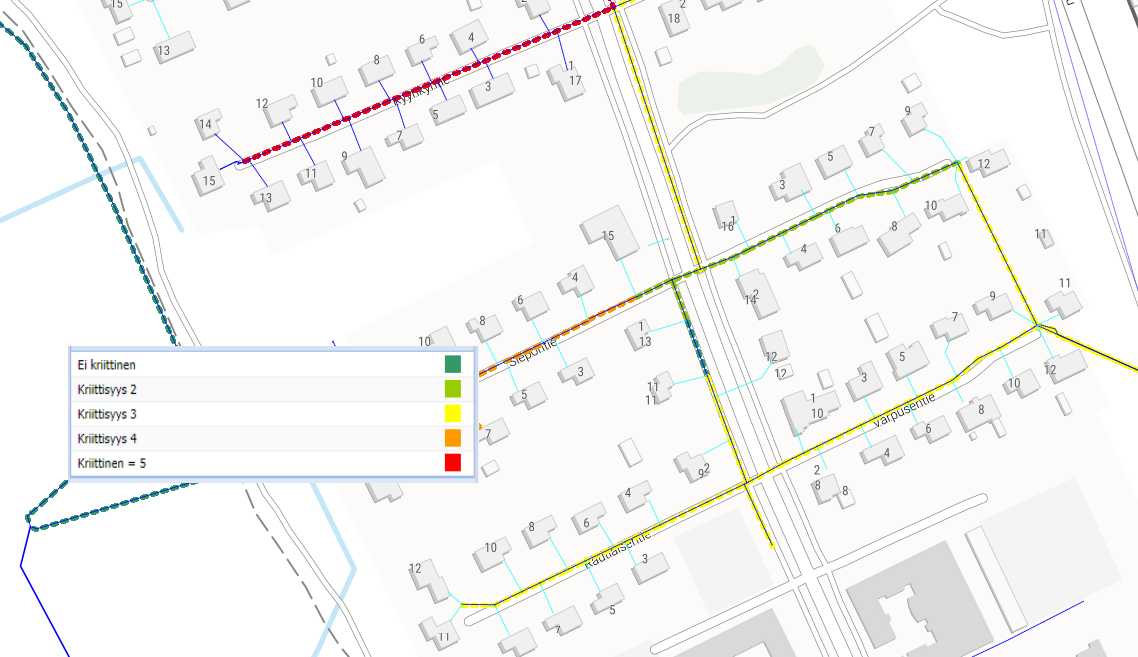
Better water network investment through analysis
Prioritizing water network renovations is a topical theme for all water utilities. Better analysing helps with the network management.
Renovation debt is growing, and it is estimated that the number of renovations should even triple in near future to restructure the aging network in a timely manner. However, that is not realistic and would also lead to unreasonable increases in the price of water for the consumers. Thus, more criteria other than one's own feeling about the condition of the network or just the age of the network are needed. The subject is important, and also very broad. It can easily be difficult to see how the topic could be approached and how to get started.
I encourage to start with simple steps, and then proceed after topic is more familiar. By utilizing the network information system, it is possible to make an analysis of network information with even a little effort, which can be utilized in the planning of renovations. The initial situation of each water utility is different, and the accuracy of the analysis should be adjusted accordingly.
The basic idea is this: First, ensure that the data is stored in the system, in the right format in the right place, and that the data is maintained. After that, utilizing a variety of analyzes will take you toward prioritized renovation planning.

My own recommendation is to first allocate resources to update the location information of the network. This way you know location and length of the network. Next, you may want to update your network construction year. I also encourage you to update the estimated construction years as well, as indicative information is better than completely missing information. Furthermore, I suggest to document the level of accuracy of the data (“year of construction is estimated”). I also recommend to identify critical pipes and critical water users already in the first rough-level analyzes.
Once the location data and construction years have been reviewed, it is worth taking more criteria into the analyzes. Water balance, leakage water, observed condition i.e. leaks are good examples. In addition, other criticality factors can be used, such as groundwater areas.
Regardless of the number of criteria, the condition index calculation and pipe classification tool of the network information system is a good analysis tool for perceiving a large data mass. It allows fragmented and extensive information to be visualized in an easy-to-understand format. It can also be used to compare fitness rating, criticality rating and a combination of these. The final decision on the order of reorganization is always made by the person, but the analysis helps in decision-making. Thus, the analysis helps to transform tacit information, network information, and other criteria into an understandable and comparable format.

The classification of pipes helps to outline the order of criticality of network restructuring
Why use an online information system and analysis in planning renovations?
- helps in choosing the type of renovation (for example, is it worthwhile to run only a water pipe or would it be important to dig up all the pipes)
- helps to identify new items or value pipes that seem equally urgent to each other (for example, critical pipes can rise higher in the list)
- helps to negotiate joint projects with the municipality or other management bodies (in meetings it is easier to compare the needs of each party and find compromises when the criticalities are in the form of spatial data and visualized)
- assists in the termination of contract boundaries (area renovation instead of a single area, or expansion or reduction of a contract area on the basis of other factors)
You should start with the basics as soon as possible and refine your analysis later. Systematic and long-term work in data collection and thus in data analysis helps the department to prioritize renovations. When renovations are properly focused, unreasonable price increases are avoided and high-quality and uninterrupted water supply to the end customer is guaranteed. The prioritization of renovations is thus directly visible in the daily lives of the customer and the citizen.
What do you think is the most important criterion for prioritizing renovations? What would you need from an network information system to make it easier to plan renovations? Stay in touch and let's talk!

 By
By


